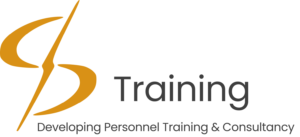Flexible Learning: How to Study Around Your Work and Family Commitments
In a world where 24 hours never seem enough, returning to school or taking a course can feel like adding a mountain to a full plate. The relentless pace of modern life—meeting deadlines at work, managing household responsibilities, attending to children’s needs, and somehow finding time for personal well-being—often leaves little to no bandwidth for traditional forms of education. For many, the dream of furthering their education remains just that: a dream, constantly shelved due to life’s unavoidable demands.
Yet ironically, this fast-changing world demands that we continuously learn and adapt. Career paths are evolving rapidly, industries are reshaped by technology, and the shelf-life of skills is shorter than ever. Whether it’s the desire to climb the professional ladder, switch careers, or simply fulfill a personal ambition, the motivation to upskill, reskill, or gain new qualifications has never been stronger—or more necessary.
Enter flexible learning, a transformative educational model that acknowledges the complexities of adult life. It offers an alternative to traditional education’s rigid, one-size-fits-all system, allowing individuals to shape their studies around their unique schedules, responsibilities, and lifestyles. With flexible learning, education no longer demands a backseat; instead, it provides self-paced online courses, learning on your terms.
This blog explores study tips for students. We’ll explore what flexible learning means, why it’s becoming a preferred choice for working adults and parents, and—most importantly—how to make it work for your situation. With the right strategies, tools, and mindset, balancing education with work and family isn’t just possible—it can be empowering.
Let’s discover how to reclaim your educational journey on your own terms.
What is Flexible Learning?
Flexible learning refers to educational methods that offer learners greater control over how, when, and where they study. It moves away from the rigid structure of traditional classroom education, allowing individuals to tailor their learning experience to fit their personal and professional lives.
Key Features of Flexible Learning:
- Online courses and digital classrooms
- Self-paced modules
- Blended learning (a mix of online and face-to-face)
- Weekend or evening classes
- Modular learning—completing one unit at a time
- Rolling admissions—start dates throughout the year
Flexible learning is increasingly used in higher education, vocational training, and corporate upskilling programs. It accommodates different learning styles, life situations, and career paths, making education more accessible.
Why Flexible Learning Is Ideal for Working Adults and Parents
1. Time Management Freedom
You can study when it suits you, whether early in the morning before the kids wake up or late at night after work. This autonomy makes learning more manageable.
2. No Geographical Constraints
You don’t need to commute or relocate. Courses can be accessed from your living room, office, or even while traveling.
3. Customisable Learning Pace
Everyone learns differently. Flexible learning allows you to slow down on challenging topics and accelerate through what you already know.
4. Reduced Financial Pressure
You can keep working full-time, so you don’t have to sacrifice income. Many programs also allow for pay-as-you-go tuition or offer scholarships and financial aid.
5. Increased Access to a Variety of Programs
From degrees to certifications to short-term skills training, flexible learning offers various options to suit your career and personal development goals.
Common Challenges (And How to Overcome Them)
While the advantages are significant, flexible learning is not without its challenges. Awareness of potential roadblocks can help you prepare better.
Challenge 1: Lack of Structure
Without a set schedule, some learners may struggle to stay on track.
Solution: Create a detailed weekly study plan. Use digital calendars or apps like Google Calendar or Trello to set deadlines and reminders.
Challenge 2: Distractions at Home
Family responsibilities, household chores, and even Netflix can distract your attention.
Solution: Designate a quiet, dedicated study space and communicate your schedule with family members to minimise interruptions.
Challenge 3: Isolation
Studying alone can lead to feelings of disconnection from peers and tutors.
Solution: Participate in online discussion forums, group chats, or study groups. Regular check-ins with a mentor or tutor can also keep you motivated.
Challenge 4: Tech Issues
Online learning requires a reliable internet connection and basic digital skills.
Solution: Invest in a stable internet connection, familiarise yourself with required platforms, and seek tech support when needed.
Creating a Study Schedule Around Work and Family
Step 1: Analyse Your Weekly Commitments
Start by writing down your work hours, family responsibilities, and other fixed commitments. Identify available time slots in your week.
Step 2: Set Realistic Study Goals
Avoid overloading your schedule. Begin with 5–10 hours a week and gradually increase if manageable. Set SMART goals (Specific, Measurable, Achievable, Relevant, Time-bound).
Step 3: Prioritise Tasks
Use the Eisenhower Matrix to distinguish between urgent and non-urgent tasks. This helps you focus on what truly matters.
Step 4: Batch Your Time
Group similar tasks together—like reading on one day and writing assignments on another. Batching reduces mental fatigue and improves focus.
Step 5: Build Flex Time
Leave buffers in your schedule for unforeseen events—sick kids, overtime at work, etc.
Effective Learning Strategies for Busy Adults
- Active Learning
- Summarise what you read in your own words.
- Teach someone else the material.
- Use flashcards or quizzes to test yourself.
- Microlearning
- Study in short bursts of 10–15 minutes.
- Use learning apps like Duolingo or Khan Academy.
- Break down large modules into bite-sized chunks.
- Pomodoro Technique
- Study for 25 minutes, then take a 5-minute break.
- After 4 sessions, take a more extended 20–30 minute break.
- Mind Mapping
- Create visual representations of ideas.
- Helps in organising thoughts and improving memory retention.
- Use Audio Learning
- Listen to lectures or podcasts while commuting, cooking, or exercising.
How to Involve Your Family in Your Learning Journey
- Explain Your Goals
Let your family know why you’re studying. Share your goals and how this effort will benefit the family in the long run. - Create a Family Study Time
If you have kids, encourage them to do their homework during your study hours. This builds a culture of learning at home. - Ask for Help
Don’t hesitate to ask your spouse or relatives to help with chores or childcare during study times. - Celebrate Milestones Together
Passed a test? Completed a module? Celebrate with your family to keep everyone invested and supportive.
Leveraging Support Systems
Employer Support
- Many employers offer tuition reimbursement programs.
- Talk to HR about flexible working hours or study leave.
- Use learning as a way to upskill within your current role.
Educational Institution Support
- Look for courses with student support services.
- Take advantage of academic counseling, mental health resources, or career guidance.
Peer Support
- Join study groups or online forums.
- Platforms like Reddit, LinkedIn Learning, or Facebook often have communities for adult learners.
Popular Platforms for Flexible Learning
DP Training: A Trusted Platform for Flexible Learning
Choosing the right learning platform is critical when balancing education with work and family responsibilities. You need more than just access to content—flexibility, support, and a learning structure designed for busy adults. This is where DP Training stands out as a leading provider of flexible, career-oriented education.
Why Choose DP Training?
DP Training has earned a strong reputation across Australia for delivering high-quality, nationally accredited training that fits seamlessly into the lives of working professionals, career changers, and parents. Whether you’re looking to start a new career in community services, aged care, or business administration, or simply want to upgrade your current qualifications, DP Training offers a learning experience tailored to real-life demands.
Here’s what makes DP Training an ideal choice for flexible learning:
1. Tailored for Busy Schedules
2. Career-Focused, Accredited Programs
3. Real-World Support and Mentorship
4. Affordable and Accessible Education
5. Practical, Industry-Relevant Curriculum
6. Ideal for Parents and Caregivers
7. Clear Pathways to Employment
Key Takeaways
- Flexible learning is ideal for adults with work and family commitments.
- Success depends on good time management, family support, and learning strategies.
- Challenges exist, but can be overcome with planning and persistence.
- Various flexible learning platforms and programs are available for every field and interest.
Final Words: Your Learning Journey Starts Now
Whether seeking a promotion, a career change, or simply the joy of learning, flexible learning opens doors that once seemed shut due to life’s responsibilities. You don’t have to choose between your job, family, and future. You can do it all with careful planning, self-discipline, and the proper support.
Remember, education is no longer a straight line—it’s a journey that bends and flexes with you. So take that first step, no matter how small. Your goals are within reach, and the tools are in your hands.
Ready to Start Your Flexible Learning Journey?
Whether you’re interested in earning a certificate 4 school-based education support or taking online courses in Australia, the time to start is now. Explore DP Training and enroll in short courses online. The journey may be challenging, but it will be worth it.





